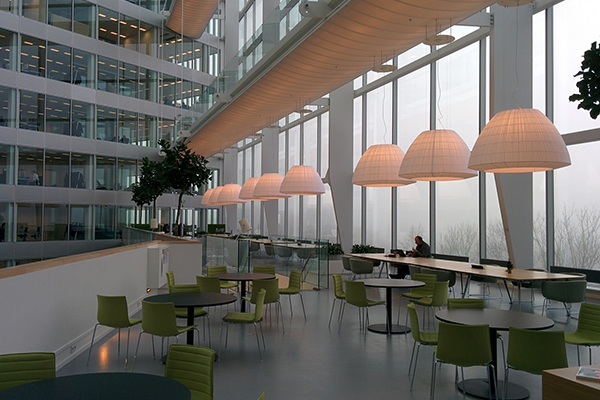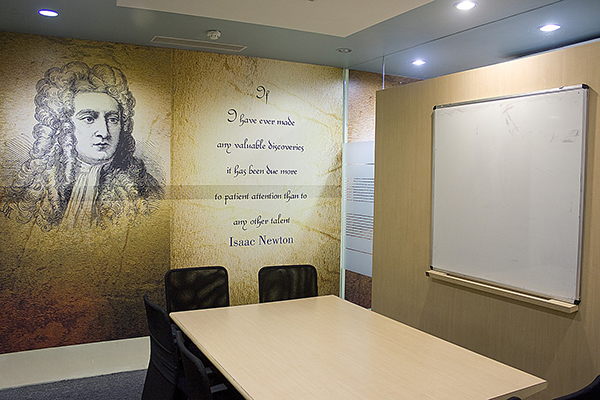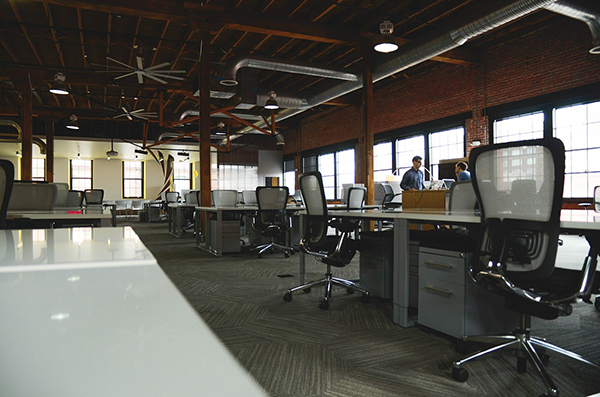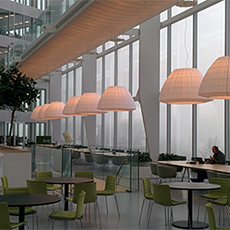
Lost productivity is an ongoing problem in businesses nationwide, and it costs America plenty. That’s the bad news.
The good news is that it’s a fixable problem, and it’s one that can be fixed in large part by facilities managers. FMs can use this recognized link between building environment and employee productivity to modify office designs and practices.
We’ve come up with some expert suggestions and recommendations on what changes best inspire workers, with a positive impact on the bottom line.
Low Employee Engagement Costs Companies Dearly
The studies keep coming in with staggering numbers.
“According to a 2015 Gallup poll, only 32 percent of America’s workforce identifies themselves as engaged at the office, which translates to an estimated $500 billion every year in lost productivity,” a recent guest post on the Facility Executive blog by office furniture provider Steelcase noted.
And when you go to the source site of that poll, there’s another that shows the flip side.
Compared to employees who are either not engaged or actively disengaged, engaged workers:
- are 17 percent more productive,
- suffer 70 percent fewer safety incidents,
- experience 41 percent less absenteeism, and
- have 10 percent better customer ratings.
In fact, companies that rank in the top quartile for employee engagement “are 21 percent more profitable compared with business units in the bottom quartile.”

Why Facilities Managers Can Have Such a Positive Impact
FMs can’t solve all of the problems that cause employee disengagement (which include everything from unmet job expectations and misuse of talent to lack of advancement opportunities and recognition). But FMs can create a balanced, healthy and supportive physical environment that goes a long way toward making workers happier, healthier and more productive.
In fact, iOffice partner Elizabeth Dukes says facility managers actually set the foundation for productivity, and should be actively sought out by company leaders to suggest and implement solutions.
“How well a facility supports employees has everything to do with productivity levels,” writes Dukes. “Your facility manager has a unique vantage over this relationship because they are business-minded, but they also understand what employees need out of their workspace to effectively and efficiently do their jobs.”
How to Make an Open Office Concept Work in Your Facility
You’ll find plenty of fans of open office design extolling its virtues. They make good points: With few walls to impede conversation, it’s easier collaborate and socialize with coworkers. The lack of private offices promotes at least the feeling of fairness and transparency. The design is also a reaction to the silo effect, when a company becomes so departmentalized that communication channels break down.
Equally passionate are those who hate the noise, the lack of privacy and even intrusiveness that open offices allow.
“Open concept offices aren’t a productivity panacea,” concedes David Spence at facility management software provider OfficeSpace, “but with the right moves to balance them out, facility managers can ensure their space fosters both collaboration and focus.”
Reduce Noise, Increase Privacy
Some of the moves Spence refers to include:
- the creation of quiet spaces and private rooms,
- the use of acoustic panels and ceilings, and
- acoustic office furniture built specifically for privacy.
Budget-friendly plants can be used as privacy screens and as noise absorbers. In fact, bringing a little nature inside has been shown to reduce stress and absenteeism and to increase productivity.
Rebecca Huval at Cornerstone magazine has three examples of offices using planter partitions, modular water walls and interior courtyard gardens to create peaceful, healthy environments.
And you don’t have to have plants sprinkled throughout a facility.
Catie Ryan, senior project manager at environmental consulting firm Terrapin Bright Green, tells Huval, “distributed plants tend to be less effective. Instead, cluster together diverse species. A designated space for nature will encourage people to dwell a little longer, resulting in a larger boost to their health.”
Even seemingly minor details, such as the placement of office equipment, can impact productivity. A facilities manager needs to assess the location of large copiers and printers, writes office equipment supplier Rexel, to see whether access is blocked in any way or whether workers nearby might be distracted by the noise.
If the FM is responsible for setting the office temperature, she should make note of the impact a few degrees can have on productivity. Rexel cites a Cornell University study that found raising the office temperature from 68 Fahrenheit to 77 reduced typing errors by 44 percent.

Facilitate Collaboration
When a large company employs an open office design, the sheer size of the building and number of employees can work against the very reason for implementing it in the first place — the space is just too big to make it practical for many of the staff to interact naturally. The same loss of spontaneous meetings can happen when a business makes use of a lot of privacy rooms and partitions.
A little planning can solve this, David Spence writes in another OfficeSpace post.
“Consider having areas within your office that allow for chance encounters and for people from varying departments to connect and share ideas,” he writes. “This can be as simple as incorporating some office design trends, such as introducing pathways to main areas (like meeting rooms and the kitchen) forcing members of different departments to interact. “
Encourage Workspace Personalization
FMs have to work with designers to bring to life ideas that fit within the budget’s scope. But ISS, a provider of facility services, writes that cost isn’t the only challenge. Companies also want sustainable workspaces, which means they need to be flexible enough to allow for growth and other changes. At the same time, employees are demanding (and do better in) personalized workspaces.
Much of the workplace personalization takes place at the device level — wearables, touchscreen computers with 3D interfaces, smart wall panels and wireless mobile device charging — which all first must be planned for in terms of physical space.
Then, the devices need to be budgeted for, purchased, inventoried, installed and maintained. Security is also an issue, especially when the company has a “bring your own device” policy, and that is another aspect under the auspices of the facilities manager.
Workplace personalization can also include physical items in the employee’s space. If your office enforces a “bare desk” policy, you’re not doing yourself a favor. Kursty Groves at the company culture site Enviable Workplace cites research proving “that a bare desk removes a sense of identity and empowerment.”
However, if workers are involved in deciding how their workspaces are laid out, in addition to being allowed to enrich them with personal effects, the positive outcome is impressive.
“Enriched environments have been shown to improve productivity by 17 percent,” writes Groves, “and environments that people have been empowered to choose, change or design impacts productivity by almost a third over lean environments.”
In fact, your building should actually show the kind of product the company makes, says Deborah Bottineau, senior regional manager of The Creative Group, a staffing agency for creative talent. This doesn’t always require a major outlay of cash, either. Ben Devenish, a Truspace Design consultant, says a chalk wall or whiteboard is great to have on hand for moments of inspiration.
Ask What Workers Want, and Provide When Possible
Employee preferences and needs of the business should be given equal weight when choosing an office design. “Being accommodating and flexible with layout options can result in happier, more productive and creative employees,” she explains.
This might mean ensuring there’s a well-stocked break room or a huddle space where workers can meet to socialize and collaborate. Margeaux Girardin at maintenance management software provider Hippo CMMS suggests FMs not only ensure the inclusion of a well-designed lunchroom with lots of natural light and a variety of seating arrangements, but that they should use them to provide special lunches to their teams a few times a year.
“These lunches are inclusive of the entire team and provide a comfortable setting to hang out and get to know the people you work with,” she says. “Note that work talk is not allowed as this isn’t a meeting or a time for office gossip. If lunch seems like a large commitment, try an afternoon coffee break with the team. The trick is bringing people together over universal staples — lunch and coffee.”
It can also mean providing health-related facilities and equipment. Employees look for perks such as wellness programs, on-site gyms and equipment like standing desks.
“As workers spend more time in the office, employers, building owners and facilities managers can take an active part in keeping employees healthy, productive and inspired,” writes FM Link’s Brianna Crandall. “The research shows that prioritizing wellness, empowering productivity, and enhancing office design can go a long way toward attracting and retaining employees.”
Credits:
jkortenbosch0pashminu
StartupStockPhotos

